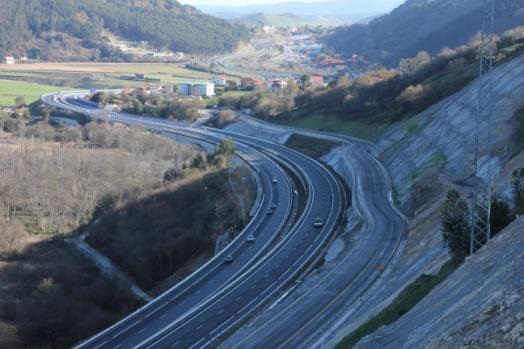The final section of the Cantabrian Motorway built by FCC is now open to the public

On 30 December, the last section of the A-8 Cantabrian Motorway, constructed by FCC, was opened and spans between Unquera, on the border with Cantabria, and La Franca in Asturias.
The 4.15 km long section, which joins the Unquera and the La Franca interchanges of the A-8 motorway, passes through the municipality of Ribadedeva on the west side. It connects with the Pendueles-La Franca section which opened to road traffic in August 2014, and on the eastern side it joins with the A-8, now also operational.
The cross-section of the motorway has two separate carriageways, one for each direction of traffic, with two 3.5 metre lanes in each; 2.5 metre wide outer hard shoulders and 1 metre inner hard shoulders, separated by a median strip of a minimum 4 metre width. The route runs as an alternative towards the north of the old N-634, avoiding the crossing of the El Peral population.
Spanish Prime Minister, Mariano Rajoy, inaugurated the A-8 stretch accompanied by the Minister of Public Works, Ana Pastor; the President of the Principality of Asturias, Javier Fernández; the President of Cantabria, Ignacio Diego Palacios, and the Government Delegate, Gabino de Lorenzo. Attending on behalf of FCC were the Chairwoman of FCC, Esther Koplowitz and the General Manager of FCC Construcción, Vicente Mohedano.
According to Rajoy, the opening of the Unquera-La Franca section signifies "a great step towards cohesion between the autonomous communities of the north: Galicia, Asturias, Cantabria and the Basque Country", since "you will be able to travel from Faro in Portugal to Paris along high-capacity roads, and it will create new employment opportunities and competitiveness.
The project will enable integrated traffic to pass along the motorway spanning along the whole of the Cantabrian Coast, which implies a crucial improvement in comfort, speed and road safety for more than 12,500 vehicles on average which drive daily along this section of the N-64.
The project has considered measures for environmental integration, such as plantations and hydroseeding on slopes, interchanges and median strips, as well as archaeological monitoring, protection of the hydrological system, and acoustic barriers in urban areas.
The implementation of the new sections of the A-8 involves a considerable improvement in comfort, speed and road safety.








